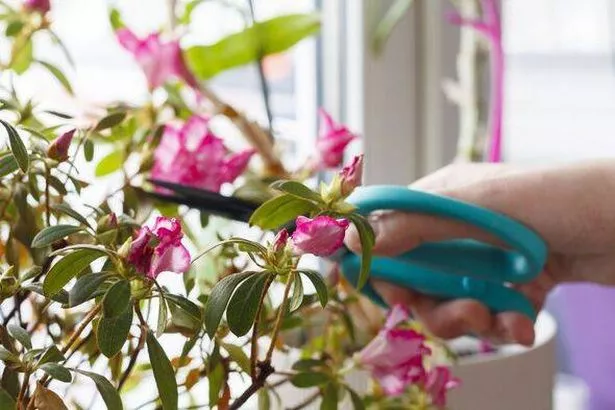As the end of the year approaches, it can feel less and less appealing to get out into the garden. However, there are still plenty of tasks to tackle – from raking up fallen leaves to cutting back tired perennials
05:00, 06 Nov 2025Updated 09:39, 06 Nov 2025
 Simon says you should be careful about pruning at this time of year(Image: YouTube/Walking Talking Gardeners)
Simon says you should be careful about pruning at this time of year(Image: YouTube/Walking Talking Gardeners)
As the year draws to a close, venturing into the garden can feel increasingly unappealing. Nevertheless, there are still plenty of jobs to complete — from gathering fallen leaves to trimming back tired perennials.
The good news for gardeners wanting to keep their task lists manageable as winter approaches is that certain plants are better left untouched for the time being.
Horticultural expert Simon from the Walking Talking Gardeners YouTube channel has compiled a list of eight plants you definitely shouldn’t prune this month.
He explains: “For many gardeners, November is the month when they do their final tidy-up of the garden — putting it to bed for winter. For most, it’s the last bit of work they’ll do outside before the cold really sets in.
“And that’s not because there won’t be anything to do — there’ll still be plenty of jobs to tackle as the winter months go on.”
 You should be very careful about when you prune your azaleas(Image: Getty)Azaleas
You should be very careful about when you prune your azaleas(Image: Getty)Azaleas
Azaleas, Simon notes, are frequently classified under the rhododendron umbrella, and his advice about avoiding pruning azaleas applies equally to rhododendrons.
“The thing with both these plants,” he clarifies, “is that they take an entire season to produce their flower buds. As soon as they finish flowering in the spring, new growth comes through, and those new, very tiny buds begin to appear in the terminal rosette at the end of the stem.”
The buds are so tiny that they can easily be overlooked, he adds, making it all too easy to snip off these valuable buds without realising. “I can understand people making that mistake with azaleas,” he says.
“They think the plants look a bit messy and give them a cut — and then there’ll be no flowers in the spring.”
 The best time to prune camellias is immediately after they finish flowering(Image: Getty)Camellias, rhododendrons,magnolias and lilacs
The best time to prune camellias is immediately after they finish flowering(Image: Getty)Camellias, rhododendrons,magnolias and lilacs
In contrast, camellias produce large, noticeable buds, yet some gardeners are still tempted to prune them during this period. They may appear somewhat untidy, Simon observes.
“You have a lot of extending growth looking messy at this time of year, and I can understand why people would cut these — and I do see them cutting them, even though quite obviously you’ve got massive flower buds all waiting to come out in the spring.
“Don’t cut them,” he adds. “Please don’t.”
Alongside rhododendrons, azaleas, and camellias, Simon urges gardeners to resist trimming magnolias and lilacs for the same reason.
 Philadelphus is at particular risk, Simon says(Image: Getty)Forsythia, ribes and philadelphus
Philadelphus is at particular risk, Simon says(Image: Getty)Forsythia, ribes and philadelphus
These hardy deciduous shrubs, often grown for their pollen-rich flowers, remain popular choices in British gardens. However, all three are prone to being pruned too early, and Philadelphus is particularly at risk, Simon warns.
The tall, arching shrub, which produces white, intensely fragrant flowers in early summer, can often look like “an absolute state” at this time of year, he acknowledges.
“You’ve really got to steel your resolve to not go out and prune it back into a tidy shape.”
If you do, he explains, you risk removing the growth the plant relies on as a foundation for next year’s blooms.
Simon concludes by suggesting other productive gardening tasks for November: “November is the time you plant your tulip bulbs. November is the time you sow your hardy annual flowering plants and your sweet peas.
“It’s also the time you start sowing your broad beans… hardy peas. There’s a long list of seeds that you should be sowing.”


Comments are closed.